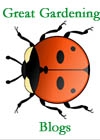
Image Courtesy of Ricale - Creative Commons Share Alike 2.0
It’s not that surprising you are plagued with deer eating your bushes.
Consider which you would choose to dine on; filet mignon or an overcooked hunk of stew meat? In the wild, no one is fertilizing and watering the plant life on a daily basis. Lush, juicy growth is widely available in springtime in most naturalized areas. Come summer or fall, all that remains have survived the heat without much water. It has to be rather stringy and tasteless. Like stew meat fried at high temperatures without any moisture.
Put your self in the deer’s shoes … er, hooves.
Just beyond a deer’s wooded home your yard shimmers greenly like an oasis basking in the sun. The grass is juicy and sweet. The shrubs are lush and succulent in that rain forest type eco-system controlled by your irrigation system. You have lovingly fed everything the ultimate fertilizer to the push out a bounty of new growth. To the deer you have created smorgasbord of delicacies. Why eat tough old tasteless plants when this heavenly smelling island of feasting lies a few yards away?
The last thing you intended was to fatten up the venison.
With 1-acre of maintained landscape and garden strewn property, you can support between 18-24 deer for a year. The big juicy leaves of hostas and hydrangeas are letting off a scent that just cannot be ignored. Filet mignon is green and it is growing all over your yard. Perhaps the temptation would not exist if we watered and fertilized natural areas too. No one would ever go to the expense.
Without a fence over 8-feet tall, you cannot deer proof your yard.
In rural areas, a 12-foot fence is required to never ever suffer any deer damage whatsoever. A fence half this height is usually priced over almost everyone’s budget. Besides, who want to feel like they live inside a cage? A lot of subdivisions won’t let you erect a fence that would actually keep deer out. The only choices left to the majority are applying deer repellents or only installing deer resistant plants.
You can stop a lot of deer browse damage to your landscaping.
It requires applying a long lasting liquid deer repellent on a regular basis. A lot of people have the idea that you only need protect certain plants. Yes, deer are more prone to eat certain plants over others. Those will be the ones they will chomp to the ground first. The truth is that deer when hungry will eat anything that isn’t poisonous to them. Effective deer repellent programs are those that are used on every plant in your yard, regardless if they deer have chewed on them or not.
It just isn’t possible to enjoy deer and plants in your yard together.
You wouldn’t let goats, cows or horses roam freely about the lawns. Common sense tells you that any ruminant (plant eater) is going to mess up your veggie patch, shrub plantings and perennial garden. Just because deer are beautiful is no reason to toss that common sense out the window. They are best admired at the zoo and wild, open spaces. You want the deer to find no reason to pass through your yard. If possible, you are best off if they never catch a tantalizing whiff on the evening breeze.
There’s a lot to learn about deer repellents.
Not all brands of deer deterrent are effective. Some are not as long lasting as stated. The more pests a repellent claims to send packing, the less likely it is to work. Deer repellents are not cheap and must be applied repeatedly over the growing season. You will be able to stop most deer browse damage with the most effective products when applied appropriately. There's a new deer deterrent directory online that can save you a lot of time searching the web for information. OutOutDeer.com is the most comprehensive information to hit the Internet. One spot for on every brand of commercial deer repellents currently available.







